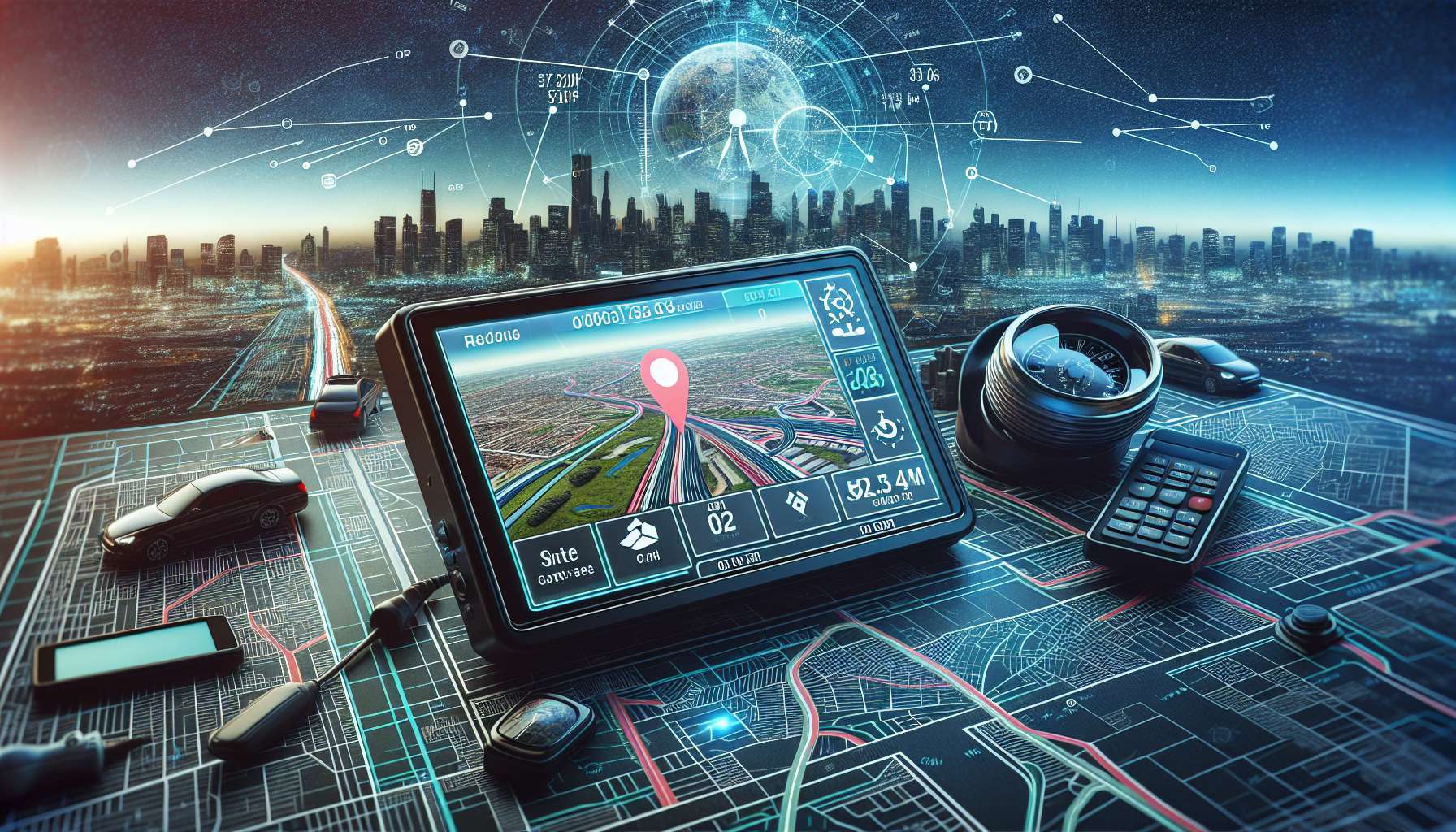The Fascinating World of Compasses: Navigating Through History and Innovation
Introduction
Imagine finding yourself in the middle of a dense forest, surrounded by towering trees and unfamiliar terrain. Lost and disoriented, you reach into your backpack and pull out a small yet powerful tool – a compass. With a simple flick of the wrist, the needle aligns itself with the Earth’s magnetic field, pointing you in the right direction towards safety and civilization. This humble instrument, the compass, has been a faithful companion to explorers, adventurers, and travelers for centuries, guiding them through uncharted territories and ensuring their safe passage.
But what exactly is a compass, and how does it work? In this comprehensive guide, we will delve deep into the world of compasses, exploring their fascinating history, intricate workings, modern applications, and future possibilities. Join us on this journey as we uncover the secrets of this indispensable navigation tool and discover the profound impact it has had on human civilization.
As we embark on this exploration, we will pose thought-provoking questions, present surprising facts, and shed light on the remarkable evolution of compass technology. Let’s set our course and navigate through the rich tapestry of compasses, unlocking their mysteries along the way.
The History of Compasses
The history of compasses dates back thousands of years, with the earliest known compass-like device being used by the ancient Chinese during the Han Dynasty (206 BCE – 220 CE). These early compasses, known as “south-pointing needles,” were simple lodestones mounted on a wooden platform that aligned themselves with the Earth’s magnetic field.
It wasn’t until the 11th century that the compass as we know it today was developed in China. This new compass featured a magnetized needle floating in a bowl of water, allowing sailors to determine their direction even when the weather was stormy or overcast. The invention of the compass revolutionized navigation and trade, enabling sailors to venture far beyond familiar coastlines and explore new lands.
During the Age of Exploration in the 15th and 16th centuries, compasses played a crucial role in the voyages of discovery undertaken by European explorers such as Christopher Columbus and Vasco da Gama. These intrepid sailors relied on their compasses to navigate vast oceans, charting new courses to distant shores and expanding the known world.
Today, compasses continue to be essential tools for navigation, with modern advancements such as electronic compasses and GPS technology enhancing their accuracy and reliability. From hiking in the wilderness to sailing the high seas, compasses remain indispensable companions for adventurers and travelers seeking to find their way in a complex and ever-changing world.
The Science Behind Compasses
At the heart of every compass is a magnetized needle that aligns itself with the Earth’s magnetic field, pointing towards the magnetic North Pole. This phenomenon, known as magnetic declination, is caused by the molten iron core of the Earth generating a magnetic field that influences the orientation of magnetic objects like compass needles.
When a compass is held level and allowed to settle, the needle will always point towards magnetic north, providing a reliable reference for determining direction. By combining the magnetic needle with directional markings on a compass rose or bezel, users can easily identify the cardinal directions (north, south, east, west) and navigate with precision.
In addition to traditional compasses, modern electronic compasses use sensors and microprocessors to detect changes in magnetic fields and provide accurate heading information. These digital compasses are integrated into smartphones, GPS devices, and other electronic gadgets, offering users a convenient and reliable means of orientation in both urban and wilderness environments.
Whether analog or digital, compasses rely on the fundamental principles of magnetism and Earth’s magnetic field to guide us on our journeys. By understanding the science behind compasses, we can appreciate the ingenuity and complexity of these seemingly simple yet profoundly important devices.
The Types of Compasses
Compasses come in a variety of shapes, sizes, and designs, each tailored to specific applications and user preferences. From traditional handheld compasses to sophisticated marine compasses, there is a compass for every navigational need. Here are some of the most common types of compasses:
Magnetic Compass
The magnetic compass is the most traditional and widely used type of compass, featuring a magnetized needle that aligns itself with the Earth’s magnetic field. This compass is reliable and durable, making it a popular choice for outdoor enthusiasts, hikers, and sailors.
Orienteering Compass
Designed for precision navigation and map reading, orienteering compasses feature a transparent baseplate with a rotating bezel for measuring angles and plotting courses. These compasses are essential tools for orienteering competitions, wilderness navigation, and outdoor exploration.
Lensatic Compass
Used primarily by military personnel and survivalists, lensatic compasses are rugged and precise instruments that feature a sighting lens and a rear sighting notch for taking accurate bearings. These compasses are ideal for navigating rough terrain and harsh conditions where reliability is paramount.
Marine Compass
Marine compasses are specially designed for use on boats and ships, featuring gimbaled mounts that keep the compass level and stable even in rough seas. These compasses are essential for safe navigation at sea, providing accurate heading information to sailors and captains.
Whether you’re hiking in the mountains, sailing the seas, or exploring the wilderness, there is a compass to suit your needs and help you find your way. By choosing the right type of compass for your activities, you can navigate with confidence and precision, knowing that you have a reliable guide at your fingertips.
The Role of Compasses in Modern Navigation
While GPS technology has become ubiquitous in modern navigation, compasses continue to play a vital role in outdoor activities, emergency preparedness, and survival situations. Unlike GPS devices, which rely on satellite signals and require a power source, compasses are simple, reliable, and unaffected by electronic interference.
Outdoor enthusiasts such as hikers, backpackers, and mountaineers rely on compasses to navigate off-trail, establish bearings, and orient themselves in remote locations where GPS signals may be weak or unavailable. By combining a compass with a topographic map and basic navigational skills, adventurers can confidently explore unfamiliar terrain and reach their destinations safely.
In emergency situations such as natural disasters or wilderness accidents, a compass can be a lifesaving tool for signaling for help, determining direction, and guiding rescuers to your location. By carrying a compass as part of your essential gear, you can increase your chances of survival and ensure that you can find your way home no matter what challenges you encounter.
Professional navigators such as sailors, pilots, and surveyors also rely on compasses for precise orientation and course plotting. Marine compasses are essential for safe navigation at sea, helping captains steer their ships on the correct heading and avoid collisions with other vessels or obstacles. By combining traditional compasses with modern electronic navigation systems, navigators can maintain situational awareness and ensure safe passage through complex environments.
Overall, compasses continue to be indispensable tools for navigation in a wide range of environments and activities, providing a reliable means of orientation and direction finding when other methods may fail. By understanding the role of compasses in modern navigation, we can appreciate their enduring value and timeless significance in guiding us through the world around us.
Expert Opinions: Navigating the Future of Compass Technology
As we look towards the future, the field of compass technology is poised for exciting advancements and innovations that promise to revolutionize navigation and orientation. We spoke with Dr. Sophia Nguyen, a leading researcher in magnetic sensing technologies, to gain insights into the future of compasses and their potential impact on society.
According to Dr. Nguyen, “The development of new materials and sensor technologies is opening up new possibilities for enhancing the accuracy and sensitivity of compasses. By incorporating cutting-edge materials such as graphene and quantum sensors, we can create compasses that are smaller, more precise, and less susceptible to external interference.”
Dr. Nguyen also highlighted the potential for integrating compass technology with augmented reality (AR) and virtual reality (VR) systems to provide users with immersive and interactive navigation experiences. By overlaying digital compass information onto real-world environments, users can gain enhanced situational awareness and intuitive direction finding capabilities.
With the rise of autonomous vehicles, drones, and robotics, compass technology is also playing a vital role in enabling these systems to navigate and operate autonomously. By integrating advanced compass sensors with intelligent algorithms and machine learning techniques, autonomous systems can navigate complex environments with precision and efficiency, opening up new possibilities for applications in transportation, logistics, and infrastructure development.
Overall, the future of compass technology holds great promise for enhancing navigation, orientation, and spatial awareness in ways that were previously unimaginable. By embracing new materials, sensor technologies, and integration strategies, compass designers and researchers are paving the way for a future where navigation is smarter, more intuitive, and more accessible to all.
Conclusion: Navigating the Path Ahead
To wrap things up, compasses have been our faithful guides for centuries, helping us navigate the world around us with precision, confidence, and clarity. From the ancient Chinese compasses of the Han Dynasty to the modern electronic compasses of today, these essential tools have shaped our understanding of direction, orientation, and exploration.
As we journey through the rich history, science, and applications of compasses, we gain a deeper appreciation for the ingenuity and resilience of these remarkable devices. Whether we’re hiking in the mountains, sailing the seas, or exploring new frontiers, compasses remain steadfast companions, guiding us through the complexities of the world and leading us towards our destinations.
In a world of constant change and uncertainty, compasses serve as beacons of stability and reliability, offering us a sense of direction and purpose in a vast and ever-changing landscape. By understanding the power and potential of compasses, we can chart our course with confidence, knowing that we have the tools and knowledge to navigate the path ahead.
So, as we embark on our next adventure, let us remember the timeless wisdom of the compass: to stay true to our heading, trust in our instincts, and embrace the journey with courage and curiosity. With a compass in hand and a spirit of exploration in our hearts, we can navigate the path ahead and discover the wonders that await us on the horizon.




